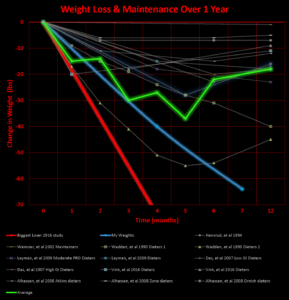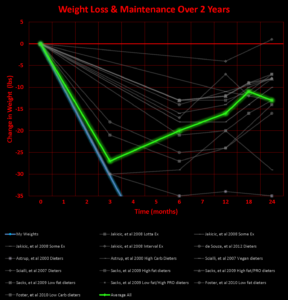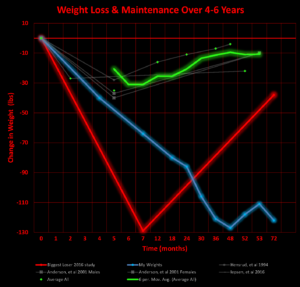Following our journal club on the latest “Biggest Loser” study, we have a brief discussion about comments and questions from around the web.
Last week, our journal club focused on the hot-off-the-press “Biggest Loser” follow up study. There has been much discussion in comment sections and on podcasts (NYTimes, NPR, Science Friday, Reddit). As we’re empirical here, we took a moment to put the media circus aside and review the actual study. Only in doing that are we able to understand what happened and now have an intelligent discussion about the results.
Unlike our journal club, we’re going to be a little free-form in style today. I’ll list a comment or question and then we’ll discuss it. Because there’s much to say, we’re going to break this up into 2 parts.
Let’s get started with the first set!
How accurate was the device used to measure the RMRs? / How can we compare the RMRs when the device used in the 2016 study was not the same as the original?
This issue was brought up by a Tufts researcher in the NYTimes comments, a researcher on the Science Friday podcast, and supposedly by the doctor on the The Biggest Loser show. Interestingly, the researchers addressed this very topic in their study. It seems to me that a reviewer must have asked this question. Hall & Co. reported that they dug up the original “metabolic cart” and tested it. They compared the test results between the two carts used. They reported the results and showed that the difference was only 2%, which is not statistically different at all. The consistency of the data from the two different carts does not seem to be an issue.
The weight stability at the time of measurement for the follow up study was not that stable. Fluctuations in weight can affect the results of an RMR test.
I do not doubt that very recent changes in weight can affect the results of an RMR test. However, I doubt that they affect the results so much as to produce values hundreds of calories lower. Furthermore, when are any of these “free-living” participants in any study that measures RMR more weight-stable than the participants of this study? NEVER. If we’re going to criticize the RMR results of this study based on that reasoning, then we should criticize every study that measures RMR on free-living participants. I don’t think this criticism takes away from the results of the 2016 study.
The Biggest Loser show has these people losing weight too quickly. Of course this 2016 study shows that they just put the weight back on.
I’ve heard and read this kind of comment countless times over the years. I’ve even heard it about “crash dieting” and any other type of diet that folks don’t support. It’s an easy thing to throw out there. Empirically, though, is that accurate to say? I mean, how do these contestants stack up against the rest of the folks that researchers have studied weight loss on?
Well, my friends, everyone’s not doing any better than the Biggest Loser contestants. Below is a graph that shows the average changes in weight during just a small collection of weight loss studies that followed up after 1 year. The y-axis is the change in weight from the starting weight. The x-axis is time since the start of the study. The glowing green line is the average of all of the background studies. The glowing red line is the average weight loss of the Biggest Loser contestants. This is just for year one.
How do folks fare over a longer stretch of time? Below is a graph that shows the average changes in weight during a small collection of weight loss studies that followed up over 2 years. Again, the y-axis is the change in weight from the starting weight and the x-axis is time since the start of the study. The glowing green line is the average of all of the background studies. We see again that people have a tendency to gain weight back over time.
Two years is a while, sure. But, how about studies that go longer? Well, those are few and far between. Below is a graph that shows the average changes in weight for a couple of studies that lasted ~4-5 years, as well as the result of the Biggest Loser follow up 6 years later. The glowing green line is the average of all of the background studies. The glowing red line is the average weight change for the Biggest Loser contestants.
At each time scale, we see that folks tend to gain some weight back over time. The Biggest Loser contestants were not unique in this regard. Many other folks have done the same thing after losing a lot of weight. If anyone disparages the Biggest Losers’ weight gain, then they should disparage the weight gain that so many other people experience. The contestants are certainly unique in how much weight they originally lost, but not that they put weight back on over time.
Stay tuned…
Next time, we’ll continue the discussion with a focus on the metabolism results.
If you have any questions about this study or anything I said, please feel free to leave a comment. I will get back to you and others may have insight to offer, too. If you have any questions or topic suggestions that you would like answered as a post, then please email me at robert@analyticfitness.com.
Don’t forget to like Analytic Fitness on Facebook, or follow me on Twitter or the other social medias!








No Responses